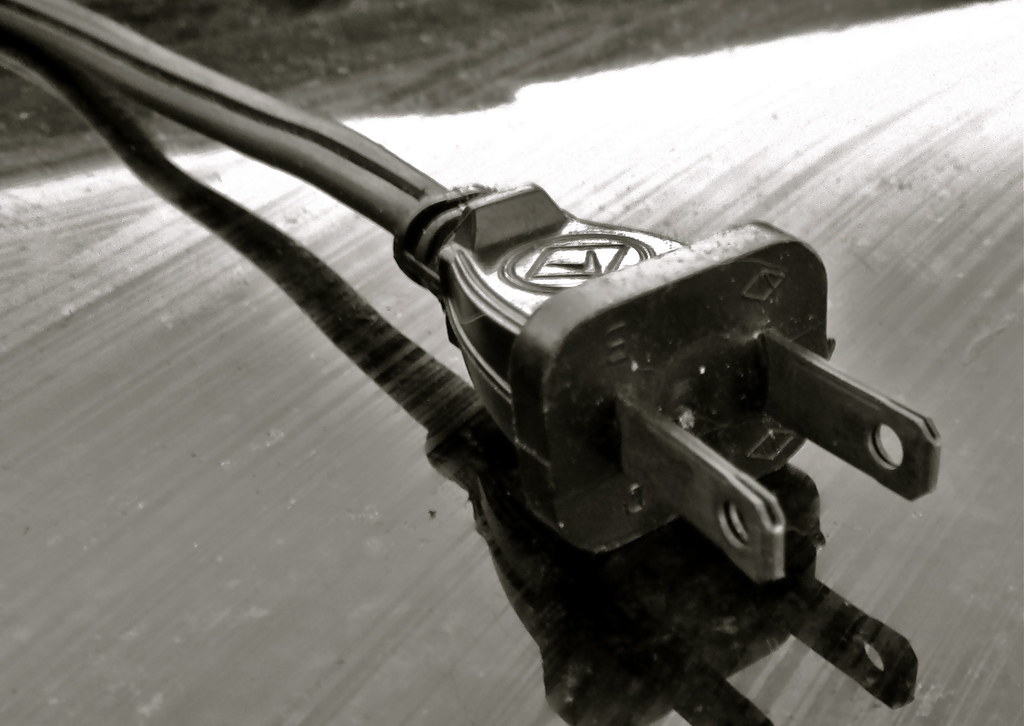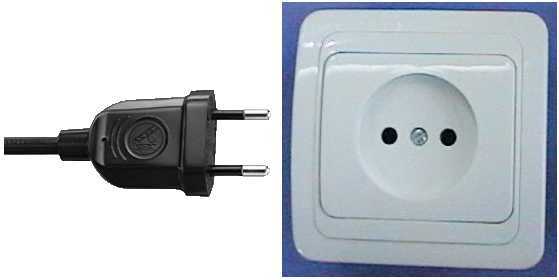On Power Plugs and Voltage in Spain
Whether you’re moving to Spain or just simply traveling there from, say, the U.S., something you should prepare for is the change in electricity and how to use it.
However, it’s not as easy as simply plugging in an adapter to the wall outlet and then charging your toothbrush or laptop. There are two things you need to take into account when bringing gadgets and gizmos abroad with you.
…which plugs into this kind of outlet:
In Spain and most of Europe, they use a similar dual design but with two round prongs instead of blades:
It’s pretty easy to stick an adapter onto the end of your power cord or the prongs that stick out from your device and charge it directly from the outlet. But before you do that, you need to make sure that it won’t get fried when you plug it in.
Still, if you absolutely must have a certain appliance, you can get a converter that will drop the voltage down from a European to an American current; however, I’ve heard people having only mixed success with such contraptions.
Do you have any experience with electricity abroad? What has worked or hasn’t worked for you trying to use your American gadgets on European power? Comment below!
However, it’s not as easy as simply plugging in an adapter to the wall outlet and then charging your toothbrush or laptop. There are two things you need to take into account when bringing gadgets and gizmos abroad with you.
1) The type of plug
Here I’m talking about the physical prongs that stick out of the power cord and plug in to the socket in the wall. For instance, in North America, we use a plug style with two parallel vertical blades with holes along the side, sometimes with a third round grounding prong: |
| Power Plug by Melissa Venable on Flickr |
…which plugs into this kind of outlet:
 |
| Thursday Challenge Power by ShellyS on Flickr |
In Spain and most of Europe, they use a similar dual design but with two round prongs instead of blades:
 |
| (Source: Wikipedia) |
It’s pretty easy to stick an adapter onto the end of your power cord or the prongs that stick out from your device and charge it directly from the outlet. But before you do that, you need to make sure that it won’t get fried when you plug it in.
2) The amount of voltage
In the U.S., the electric current flows (ahem) at 120V, but in Spain, it runs at 230V. This isn’t a problem, for example, if your laptop charger has “Input: 100-240V” because that means it can run on both the American and the European voltage. However, if it only has a “120V,” like my electric toothbrush, then there’s just no point in bringing it. Leave it at home, bring a regular or battery-powered toothbrush, or just buy a new one once you’re abroad. Otherwise, the extra voltage will fry it.Still, if you absolutely must have a certain appliance, you can get a converter that will drop the voltage down from a European to an American current; however, I’ve heard people having only mixed success with such contraptions.
Do you have any experience with electricity abroad? What has worked or hasn’t worked for you trying to use your American gadgets on European power? Comment below!

